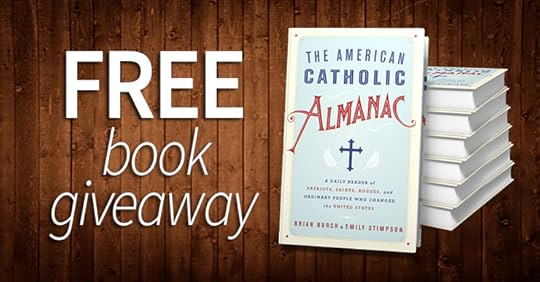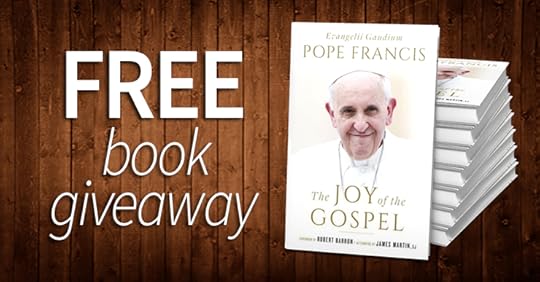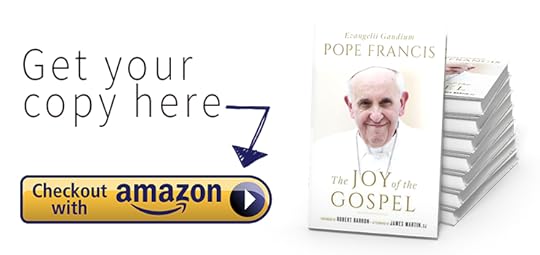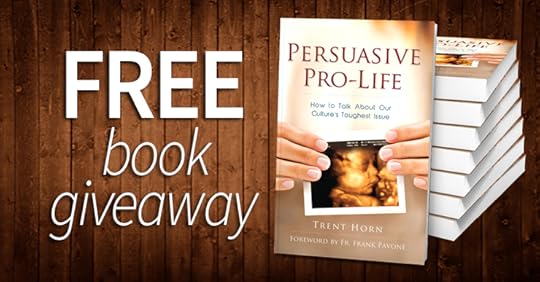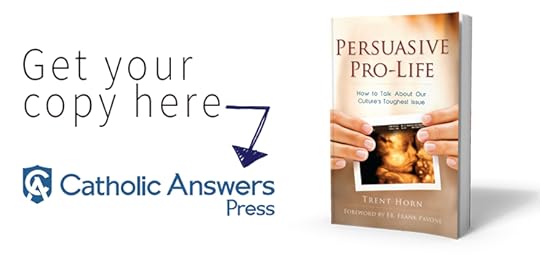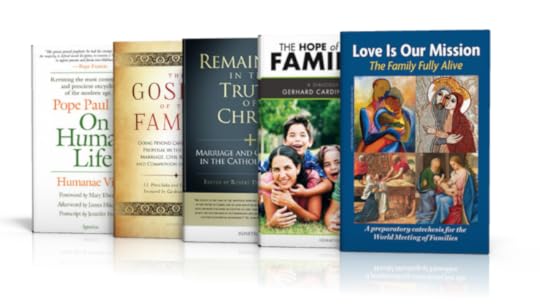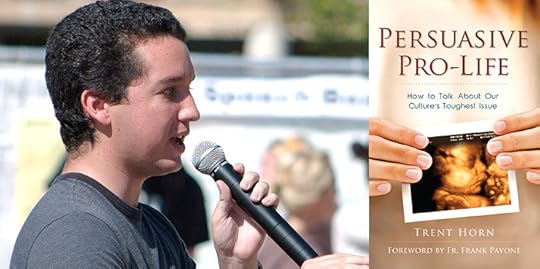Brandon Vogt's Blog, page 23
October 21, 2014
The Friar Who Was Ordered to Skate
Friar Gabriel skated for seven years as a teenager in Australia, but when he began sensing a call to the religious life, he prepared to abandon his skateboarding to live a life of poverty, chastity, and obedience.
He joined the Franciscan Friars of the Immaculate in Toodyay, Western Australia, and for six years he never touched a skateboard.
But then one day his superior gave a surprising assignment. He ordered Friar Gabriel to obtain a skateboard and go to the skatepark once a week, where he would evangelize and witness to the religious life.
Friar Gabriel obeyed. After spending time within the skaters, he realized they shared a connection: both friars and skaters see themselves as counter-cultural. In their mutual rejection of worldly values, they both stand open to new paths in life.
Friar Gabriel’s witness has connected him with scores of people, mostly young men, who otherwise would never encounter Christ or his Church. Check out this evocative new short film from Spirit Juice Studios highlighting his work:
If you can’t see this video in your RSS reader or email, then click here.
(If you’re having problems seeing the video, click here.)
By the way, that moving voice you hear? It’s Friar Gabriel. He not only performs all of his own stunts but sings his own songs, too.
The post The Friar Who Was Ordered to Skate appeared first on Brandon Vogt.





October 17, 2014
“The American Catholic Almanac” Giveaway!
“Find out how much God has given you and from it take what you need; the remainder is needed by others.” – St. Augustine
Since I’ve built up a large collection of extra books and resources, every week I give some away absolutely free, no strings attached. Each giveaway lasts seven days with a new one beginning every Friday. You can enter any time during the week. Check out my past giveaways here.
Thanks to Image Books, today I’m giving away TEN copies of the new The American Catholic Almanac.
(If you missed it, read my interview with Emily about the book.)
The American Catholic Almanac: A Daily Reader of Patriots, Saints, Rogues, and Ordinary People Who Changed the United States
by Brian Burch and Emily Stimpson
Image Books, 416 pages, hardcover
Released on September 30, 2014
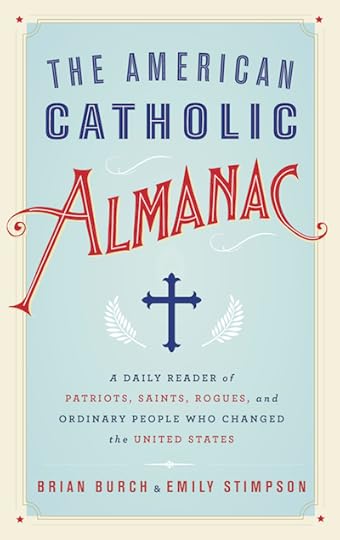 What do Buffalo Bill, John F. Kennedy, Vince Lombardi, Dorothy Day, Fulton Sheen, and Andy Warhol have in common?
What do Buffalo Bill, John F. Kennedy, Vince Lombardi, Dorothy Day, Fulton Sheen, and Andy Warhol have in common?
They’re all Catholics who have shaped America. In this page-a-day history, 365 inspiring stories celebrate the historic contributions of American men and women shaped by their Catholic faith. From famous figures to lesser-known saints and sinners, The American Catholic Almanac tells the fascinating, funny, uplifting, and unlikely tales of Catholics’ influence on American history, culture, and politics. Spanning the scope of the Revolutionary War to Notre Dame football, this unique collection of stories highlights the transformative role of the Catholic Church in American public life over the last 400 years.
Did you know…
The first immigrant to arrive in America via Ellis Island was a 15-year-old Irish Catholic girl?
Al Capone’s tombstone reads “MY JESUS MERCY”?
Andrew Jackson credited America’s victory in the Battle of New Orleans to the prayers of the Virgin Mary and the Ursuline Sisters?
Five Franciscans died in sixteenth-century Georgia defending the Church’s teachings on marriage?
Jack Kerouac died wanting to be known as a Catholic and not only as a beat poet?
Catholic missionaries lived in Virginia 36 years before the English settled Jamestown?
I’m using Rafflecopter to help with the giveaway, which is cool because it allows you multiple entries for commenting, posting on Facebook, sharing on Twitter, etc. Click below to enter:
(If you’re reading this through email or RSS and don’t see the giveaway widget, click here.)
By entering this giveaway you agree to occasionally receive email updates from me—no spam, just updates about free books, cool links, and exciting news.
The winner(s) will be randomly selected next Friday and the books will be sent out, free of charge, shortly thereafter.
In the future I’ll be giving away more books and resources, sometimes multiple items per giveaway! So subscribe via feed reader or email to ensure you never miss your chance to win.
(Since I’m covering the shipping costs, only residents within the continental United States are eligible to win.)
The post “The American Catholic Almanac” Giveaway! appeared first on Brandon Vogt.





October 16, 2014
How Catholics Changed America: An Interview with Emily Stimpson
Few writers know the American Catholic Church scene better than Emily Stimpson. As a longtime journalist for the Our Sunday Visitor Newsweekly and several other Catholic publications, she’s written hundreds of articles on American parishes, religious trends, and on-the-ground Catholic life.
That made her the perfect writer to pair with Catholic Vote’s Brian Burch to produce The American Catholic Almanac: A Daily Reader of Patriots, Saints, Rogues, and Ordinary People Who Changed the United States (Image Books, 2014).
I recently sat down with Emily to discuss the new book, the legacy of American Catholics, and which Catholics will be remembered by future historians.
BRANDON: What gave you and Brian Burch the idea for this book? Why this book at this time?
EMILY STIMPSON: In the wake of the HHS Mandate and recent court rulings on same-sex marriage, many Catholics were justifiably concerned about government-imposed limitations of their religious freedom. But many more Catholics didn’t seem concerned at all. There was a lot of shoulder shrugging. On top of that, more and more Americans have been questioning the Church’s place in the public square, seeing the Church (and faith itself) as a threat to democracy. Part of that problem, we believe, stems from a sort of historical amnesia. As American Catholics, we’ve forgotten our story: why our ancestors came here, how they sacrificed to establish the Catholic Church in America, and how much they contributed to the growth of this country. The hope was that by re-telling our family story—in a fun, interesting, and accessible way—we could help Catholics (and all people of good will) both appreciate what the Church has done and work more vigorously to protect it.
BRANDON: The Almanac includes 365 stories celebrating American men and women who have been shaped by their Catholic faith. What were some of the most intriguing stories you uncovered?
EMILY: Every day I spent writing this book I discovered intriguing characters and events. For example, did you know that the first Catholic seminary in the U.S. was housed in a former tavern? Knowing that puts a whole different spin on “theology on tap,” doesn’t it? There really is nothing new under the sun!
Other favorite discoveries included Stagecoach Mary, a gun-toting, cigar-smoking former slave who helped the Ursuline Sisters found a school and convent in the Wild West; Father George Alleman, one of the early missionaries in the Midwest who bears a striking resemblance to the mythical Paul Bunyon—they say his stride could match that of any horse’s; Sacramento’s first bishop, Patrick Manogue, an Irish-immigrant who used the fortune he made in the California Gold Rush to pay his way through seminary; and then all the fascinating converts, such as Fanny Allen (daughter of Revolutionary War hero Ethan Allen), Joseph Revere (Paul Revere’s grandson), and Levi Silliman Ives (the first Protestant bishop to become Catholic since the mid-seventeenth century). Really, I have too many favorites to list!
BRANDON: Suppose you had to choose one figure who best embodied the character of American Catholicism. Who would it be and why?
EMILY: It’s not possible. The shape of the Church in America today was formed by so many different ideas, struggles, and characters. As a Church, we are who we are today because of sinners like John F. Kennedy and saints like Elizabeth Ann Seton, missionaries like Father Frederick Farmer and mothers like Dorothy Day, converts like James Kent Stone and reverts like Jack Kerouac, not to mention immigrants from every corner of the globe and every class and station in life. These men and women became involved in heresies and rebellions, art and politics, ministry and industry. They followed different paths in pursuit of different ends. Sure, there are threads common to some of our spiritual ancestors, but not to all. It took many different strands of faith to weave together the Church we are today. And that was really one of the greatest lessons I took away from writing the book: seeing how rich and varied our history as American Catholics was.
BRANDON: What are some key lessons Catholics today should take away from these men and women who built the Church in America?
 EMILY: Probably the most important lesson is that the Faith should never be taken for granted. Yes, Christ promised that the gates of Hell would not prevail against the Church. But that doesn’t mean the Holy Spirit is going to do all the work for us. The health and vitality of the Church in any given place and time, in large part, depends upon her people. It depends upon us—working, praying, and sacrificing to hand on the Faith to the next generation. The Church did not spring up from American soil like Athena did from the head of Zeus, fully and perfectly formed. Rather, the Church in America was built on the blood of our own martyrs—Father Juan Padilla, Saint Isaac Jogues, and Father Pedro de Corpa, to name a few—as well as the ashes of churches, convents, and schools burned by anti-Catholic Nativists and Know-Nothings. We owe previous generations of Catholics a debt that can be repaid only by working just as hard as they did to form a new generation of disciples.
EMILY: Probably the most important lesson is that the Faith should never be taken for granted. Yes, Christ promised that the gates of Hell would not prevail against the Church. But that doesn’t mean the Holy Spirit is going to do all the work for us. The health and vitality of the Church in any given place and time, in large part, depends upon her people. It depends upon us—working, praying, and sacrificing to hand on the Faith to the next generation. The Church did not spring up from American soil like Athena did from the head of Zeus, fully and perfectly formed. Rather, the Church in America was built on the blood of our own martyrs—Father Juan Padilla, Saint Isaac Jogues, and Father Pedro de Corpa, to name a few—as well as the ashes of churches, convents, and schools burned by anti-Catholic Nativists and Know-Nothings. We owe previous generations of Catholics a debt that can be repaid only by working just as hard as they did to form a new generation of disciples.
Another lesson, which is a close second to the first, is that we have so much reason for hope. When we look at the rapid secularization of our culture, the unbelief and doubt among baptized Catholics, and the mounting persecution the Church in America faces from the government, it’s easy to despair. But really, so many of the struggles we face right now pale in comparison to the struggles early American Catholics faced. Priests today feel like they have their hands full when they’re put in charge of two parishes. But imagine being the only priest in a territory the size of Italy….or California. Fortunately, our bishops aren’t yet being shouted out of the pulpit by their priests during Mass, as John Carroll was in New York in the 1780s, and our priests aren’t being tarred and feathered like Father John Bapst was in 1850s Maine. There are no massive crowds of rioters standing outside our convents and parishes, preparing to torch buildings to the ground (as there was in Kentucky, Massachusetts, New York, Pennsylvania, Arkansas, and elsewhere in the mid-nineteenth century) nor is anyone threatening to close down Catholic schools for good (like Oregon State attempted to do in the 1920s). The Church in America has faced incredible persecution before, and not only survived, but thrived. I have great hope that, if we’re faithful, by God’s grace that will continue to hold true.
BRANDON: In a hundred years, when historians looks back on our era, which Catholics living today will have left an indelible mark on our country?
EMILY: Well, some actually made it into the book. Mother Angelica, the founder of EWTN was one. Father Michael Scanlan, TOR, president emeritus of Franciscan University was another. To that list, I’d also add Dr. Scott Hahn and Father Benedict Groeschel, CFR. Unfortunately, not all “indelible marks” are good marks, so there are some decided “Catholic rogues” leaving their mark on the country right now that would earn themselves a spot—Speaker Nancy Pelosi, Vice President Joe Biden, and Justice Anthony Kennedy leap immediately to mind. Bishops are a tougher call—I’m not willing to put any of our living bishops in the saints or rogues category just yet…although that’s not to say I don’t have my suspicions about where some of them will end up.
I should add, however, that “indelible mark” is a pretty high bar. The Almanac also includes more ordinary Catholics like the journalist Katharine Burton or NASA Flight Director Gene Kranz. History, for good and bad, isn’t only shaped by the greats. It’s also shaped by ordinary men and women like you and me, who choose whether or not they’re going to be faithful to God’s call and God’s law. It’s the ordinary folks, who either cooperate with grace or refuse grace, that ultimately move both Church and country in a given direction. So, in a sense, there’s not a Catholic among us who couldn’t find themselves in some future version of the Almanac. It all depends on how well we play the part God has given us to play.
The post How Catholics Changed America: An Interview with Emily Stimpson appeared first on Brandon Vogt.





October 15, 2014
Learning from a Saint who Balanced Prayer and Action Perfectly
Today we continue our regular series called “Learning from the Saints.” Our guide is expert Bert Ghezzi, a dear friend of mine and the author of numerous books including Voices of the Saints, Saints at Heart, and Discover Christ: Developing a Personal Relationship with Jesus.
His more recent books are The Heart of Catholicism and Prayers to the Holy Spirit. You can learn more about Bert and his work at BertGhezzi.com.
Today, Bert profiles St. Teresa of Avila, the sixteenth-century Doctor of the Church.
 A friend was once surprised to find St. Teresa gorging herself on a partridge. “What would people think?” she asked. “Let them think whatever they want,” said Teresa. “There’s a time for penance, and there’s a time for partridge.” Endearing stories like this reveal the secret of Teresa’s life: Heaven invaded her heart, but she never lost her head in the clouds.
A friend was once surprised to find St. Teresa gorging herself on a partridge. “What would people think?” she asked. “Let them think whatever they want,” said Teresa. “There’s a time for penance, and there’s a time for partridge.” Endearing stories like this reveal the secret of Teresa’s life: Heaven invaded her heart, but she never lost her head in the clouds.Teresa was a spiritual late-bloomer. She said she was a “gad-about” nun for 20 years, not getting serious about her spirituality until she was 40. Then a series of extraordinary encounters with Christ launched her Christian growth. Once while she was praying the Veni Creator Spiritus, she seemed to hear him say, “I will not have you hold conversations with men, but with angels.” From that time, St. Teresa enjoyed frequent heaven-sent experiences of God’s presence. She wrote about a recurring divine invasion of her soul in this famous passage from her Autobiography:
What the Lord desires is works. If you see a sick woman to whom you can give some help, never be affected by the fear that your devotions will suffer, but take pity on her: if she is in pain, you should feel pain too; if necessary, fast so that she may have your food, not so much for her sake as because you know it to be your Lord’s will. That is true union with his will.
“I would see beside me, on my left hand, an angel in bodily form–a type of vision that I am not in the habit of seeing, except very rarely….
“It pleased the Lord that I should see this angel in the following way. He was not tall, but short, and very beautiful, his face so aflame that he appeared to be one of the highest types of angel who seem to be all afire….
“In his hands I saw a long golden spear and at the end of the iron tip I seemed to see a point of fire. With this he seemed to pierce my heart several times so that it penetrated to my entrails. When he drew it out, I thought he was drawing them out with it and he left me completely afire with a great love for God. The pain was so sharp that it made me utter several moans; and so excessive was the sweetness caused me by this intense pain that one can never wish to lose it, nor will one’s soul be content with anything less than God. It is not bodily pain, but spiritual, though the body has a share in it–indeed, a great share. So sweet are the colloquies of love which pass between the soul and God that if anyone thinks I am lying I beseech God, in His goodness, to give him the same experience.”
Teresa encourages us to climb the heights of prayer, but at the same time instructs us to stay in touch with the realities of Christian living. Prayer that displaces charity, said the saint, does not please God, and her own care for others was the proof of her spirituality. She was an activist who helped thousands live their daily lives more Christianly. From 1560 until her death in 1582, she founded 17 renewed Carmelite convents in Spain and spearheaded a general renewal of Catholic life. Because of her profound and practical books on prayer and her work as a leader of the Catholic Reformation, St. Teresa of Avila has been recognized as a Doctor of the Church.
“What the Lord desires is works. If you see a sick woman to whom you can give some help, never be affected by the fear that your devotions will suffer, but take pity on her: if she is in pain, you should feel pain too; if necessary, fast so that she may have your food, not so much for her sake as because you know it to be your Lord’s will. That is true union with his will.”
— St. Teresa of Avila
(Image Credit: New Theological Movement)
Read more from Bert at his website www.BertGhezzi.com, or check out his many books on Amazon.
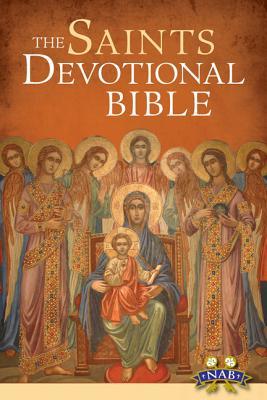
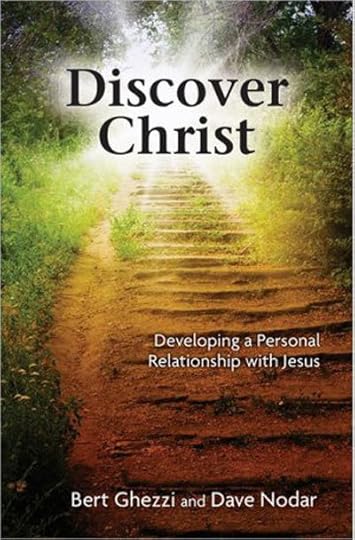
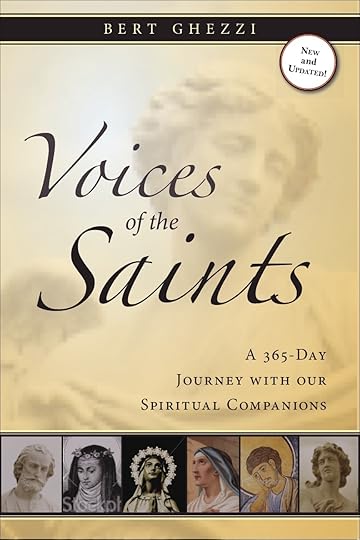
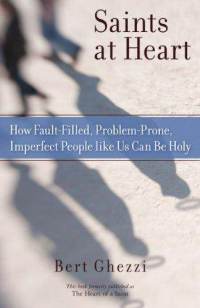
The post Learning from a Saint who Balanced Prayer and Action Perfectly appeared first on Brandon Vogt.





October 14, 2014
Is God a Moral Monster?: Making Sense of the Old Testament God [Book]




Is God a Moral Monster?: Making Sense of the Old Testament God by Paul Copan (Baker Books, 2011)


Many people are troubled by the apparent violence in the Old Testament, wondering how a good and loving God could, for instance, command the slaughter of entire tribes. This book by Paul Copan, an Evangelical apologist, is the best I know on the topic, and for a limited time you can get it for just $2.99:
The post Is God a Moral Monster?: Making Sense of the Old Testament God [Book] appeared first on Brandon Vogt.





October 13, 2014
Why You Need the New Saint Thomas Institute TODAY (Ends Tomorrow!)
When Dr. Taylor Marshall launched the New Saint Thomas Institute last October, I couldn’t have been more excited. It’s so innovative. Using the power of new media, he created a private membership community where people could take college courses in theology and philosophy for less than $1 per day (that’s just 2% of what a typical college course costs!).
I’ve been part of the Institute since the beginning both as a Member and as a special interview guest. The content is top notch and professionally produced. I don’t think there’s a better bargain in the world of Catholic graduate education.
Taylor recently sat down with me to discuss New Saint Thomas Institute and why you need to sign up TODAY to receive your special bonuses before enrollment closes tomorrow.
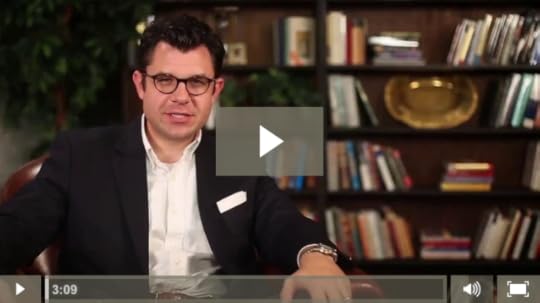
BRANDON: Why did you decide to start New Saint Thomas Institute? What sets it apart from other Catholic schools?
TAYLOR MARSHALL: I received emails for years from Catholics asking the same question: “How can I learn Catholic theology and philosophy?” Most people are not able to pay the high tuition at local Catholic universities. They are also not ready to move to a different location to pursue studies. So we created a solution that was cost-effective (our tuition is about 2% that of larger institutions) and that is time-honoring. We have over 1,000 Members and they consist of business men, young mothers, monks, nuns, priests, deacons, retired grandparents, doctors, and college students. We are also in over 24 nations.
BRANDON: What type of content do you share through New Saint Thomas Institute?
TAYLOR MARSHALL: We share video lessons in HD quality and audio MP3 lessons. I also host a monthly podcast called “Ox Talk” (in honor of St. Thomas Aquinas, the so-called “Dumb Ox”) where I answer the “hard questions” that student Members have within the New Saint Thomas Institute.
BRANDON: Why does the average Catholic need a solid grounding in theology and philosophy?
TAYLOR MARSHALL: We live in a time of increased secularity. Members are interested in defending their Catholic faith and sharing it with friends and family. Anyone who feels inadequate or confused about sharing their Catholic faith should consider joining the New Saint Thomas Institute.
We cover topics ranging from Thomas Aquinas, Augustine, the Blessed Mother, Christology, and atheism. In fact, you recently gave a GREAT three-part interview on sharing the faith with atheists (watch sample here). I think your readers would really like the content we offer and grow through it.
BRANDON: Much of your teaching centers on the work of St. Thomas Aquinas. Why is he so pivotal to Catholic thought?
TAYLOR MARSHALL: We named the Institute after Saint Thomas Aquinas. We call it the “New” Saint Thomas Institute because we are trying to amplify the New Evangelization by promoting the “Old Evangelization” represented by the theological genius of Saint Thomas Aquinas. Saint Thomas was interested in engaging with ancient pagan philosophy, but as a Dominican he was a preacher for his times. We find Thomas engaging heretics, Muslims, Jews, and atheists in his writings. We want our student Members to do the same with the help of Thomas Aquinas.
BRANDON: The New Saint Thomas Institute enrollment window closes in just one day. Why should people sign up now and what bonuses will they receive??
TAYLOR MARSHALL: As you mentioned, we are closing Fall enrollment on October 14 at 11:59pm CT. Those who join before October 14 will receive instant access, 38% off our already ridiculously low tuition, have a 21-day full money back guarantee, and get several bonuses including my books The Crucified Rabbi and Thomas Aquinas in 50 Pages. We are also adding the bonus of a “Catholic Bible Cheat Sheet” that Members can print out and place in their Bibles. It has all the verses they need to defend nearly every Catholic teaching. We are also adding bonus MP3s on Saint Joseph, How to Pray the Rosary Daily, and an Introduction to Logic. There are even more bonuses listed and explained at NewSaintThomas.com.
I really think that the New Saint Thomas Institute is a game changer for the Catholic online education. It is a living community of Catholics all over the world. Where else can you study orthodox, magisterial Catholic theology for less than a dollar a day – with Chinese Catholics, British Catholics, Australian Catholics, and Brazilian Catholics, etc.?
So check out the New Saint Thomas Institute and don’t miss the joining cut off date tomorrow (October 14) at 11:59pm CT.
The post Why You Need the New Saint Thomas Institute TODAY (Ends Tomorrow!) appeared first on Brandon Vogt.





October 10, 2014
“The Joy of the Gospel” Book Giveaway!
“Find out how much God has given you and from it take what you need; the remainder is needed by others.” – St. Augustine
Since I’ve built up a large collection of extra books and resources, every week I give some away absolutely free, no strings attached.
Each giveaway lasts seven days with a new one beginning every Friday. You can enter any time during the week. Check out my past giveaways here.
Thanks to Image Books, today I’m giving away TEN copies of the new deluxe hardcover edition of Pope Francis’ The Joy of the Gospel (Evangelii Gaudium).
The Joy of the Gospel (Evangelii Gaudium)
by Pope Francis with Fr. Robert Barron (Foreword) and Fr. James Martin, SJ (Afterword)
Image Books, 224 pages, hardcover
Released on October 7, 2014
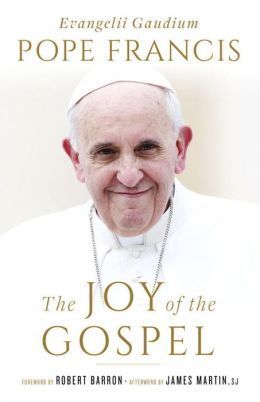 This special edition of Pope Francis’s popular message of hope explores themes that are important for believers in the 21st century. Examining the many obstacles to faith and what can be done to overcome those hurdles, he emphasizes the importance of service to God and all his creation.
This special edition of Pope Francis’s popular message of hope explores themes that are important for believers in the 21st century. Examining the many obstacles to faith and what can be done to overcome those hurdles, he emphasizes the importance of service to God and all his creation.
Advocating for “the homeless, the addicted, refugees, indigenous peoples, the elderly who are increasingly isolated and abandoned,” the Holy Father shows us how to respond to poverty and current economic challenges that affect us locally and globally. Ultimately, Pope Francis demonstrates how to develop a more personal relationship with Jesus Christ, “to recognize the traces of God’s Spirit in events great and small.”
Profound in its insight, yet warm and accessible in its tone, The Joy of the Gospel is a call to action to live a life motivated by divine love and, in turn, to experience heaven on earth.
Includes a Foreword by Fr. Robert Barron and an Afterword by Fr. James Martin, SJ.
I’m using Rafflecopter to help with the giveaway, which is cool because it allows you multiple entries for commenting, posting on Facebook, sharing on Twitter, etc. Click below to enter:
(If you’re reading this through email or RSS and don’t see the giveaway widget, click here.)
By entering this giveaway you agree to occasionally receive email updates from me—no spam, just updates about free books, cool links, and exciting news.
The winner(s) will be randomly selected next Friday and the books will be sent out, free of charge, shortly thereafter.
In the future I’ll be giving away more books and resources, sometimes multiple items per giveaway! So subscribe via feed reader or email to ensure you never miss your chance to win.
(Since I’m covering the shipping costs, only residents within the continental United States are eligible to win.)
The post “The Joy of the Gospel” Book Giveaway! appeared first on Brandon Vogt.





October 3, 2014
“Persuasive Pro-Life” Book Giveaway!
“Find out how much God has given you and from it take what you need; the remainder is needed by others.” – St. Augustine
Since I’ve built up a large collection of extra books and resources, every week I give some away absolutely free, no strings attached.
Each giveaway lasts seven days with a new one beginning every Friday. You can enter any time during the week. Check out my past giveaways here.
Thanks to the Catholic Answers, today I’m giving away TEN copies of Trent Horn’s newest book, Persuasive Pro-Life: How to Talk About Our Culture’s Toughest Issue .
Persuasive Pro-Life: How to Talk About Our Culture’s Toughest Issue
Trent Horn
Catholic Answers Press, 334 pages, paperback
 Are you scared to talk about abortion? Don’t worry—almost everyone is. Either we think the subject is too impolite, or we don’t want to be branded an intolerant fanatic, or we’re afraid we won’t represent the pro-life side well enough. Whatever the reason for this fear, it causes many of us pass up opportunities to speak out on behalf of the unborn.
Are you scared to talk about abortion? Don’t worry—almost everyone is. Either we think the subject is too impolite, or we don’t want to be branded an intolerant fanatic, or we’re afraid we won’t represent the pro-life side well enough. Whatever the reason for this fear, it causes many of us pass up opportunities to speak out on behalf of the unborn.
You can overcome this fear, says Trent Horn in his new book Persuasive Pro-Life. With a little knowledge and a few proven techniques, you can become a bold and effective apologist for life.
Drawing on over a decade as a pro-life organizer, Horn helps you cut through the diversions and obfuscations of the “pro-choice” side in order to accurately frame the legal, historical, and medical issue surrounding abortion. Then he demonstrates—with vivid personal examples from his years of campus activism—the importance of being charitable in all abortion debates, no matter how strident the other side might be. We must be not just warriors for the pro-life cause, he says, but ambassadors for it.
Then Horn leads you a guided tour of the many types of pro-abortion opponent or inquirer (“the pragmatist,” “the skeptic,” “the conflicted”) along with more real-life examples. In each case he teaches you specific approaches—what to say, what not to say, and how to bear yourself—that are custom-tailored to every situation.
The struggle over abortion has never been hotter, and the stakes could not be higher.
Read Persuasive Pro-Life today and never again be afraid to speak up for the precious and fundamental right to life.
I’m using Rafflecopter to help with the giveaway, which is cool because it allows you multiple entries for commenting, posting on Facebook, sharing on Twitter, etc. Click below to enter:
(If you’re reading this through email or RSS and don’t see the giveaway widget, click here.)
By entering this giveaway you agree to occasionally receive email updates from me—no spam, just updates about free books, cool links, and exciting news.
The winner(s) will be randomly selected next Friday and the books will be sent out, free of charge, shortly thereafter.
In the future I’ll be giving away more books and resources, sometimes multiple items per giveaway! So subscribe via feed reader or email to ensure you never miss your chance to win.
(Since I’m covering the shipping costs, only residents within the continental United States are eligible to win.)
The post “Persuasive Pro-Life” Book Giveaway! appeared first on Brandon Vogt.





October 1, 2014
5 Must-Read Books on Marriage and the Family
Over the next year, the Church will celebrate three major events dedicated to marriage and the family. Next month will bring the highly anticipated Extraordinary Synod, followed by next year’s Ordinary Synod, and then finally the World Meeting of Families next October in Philadelphia.
In light of these events, now is the time to read up on marriage and family. If you haven’t already, be sure to download the “Instrumentum Laboris”, the Extraordinary Synod’s working document, which will shape much of the dialogue this month (find it here in plain text, PDF, Kindle, or Nook formats.)
I also recommend any of the five new books below from Our Sunday Visitor and Ignatius Press:
Love Is Our Mission: The Family Fully Alive
by Pontifical Council for the Family
Our Sunday Visitor, 128 pages, paperback
 For Pope Francis, as for his predecessors Saint John Paul II and Pope Emeritus Benedict XVI, this is more than just talk. It is a rallying cry. This is the focus of the 2015 World Meeting of Families: Love is Our Mission: The Family Fully Alive.
For Pope Francis, as for his predecessors Saint John Paul II and Pope Emeritus Benedict XVI, this is more than just talk. It is a rallying cry. This is the focus of the 2015 World Meeting of Families: Love is Our Mission: The Family Fully Alive.
For Catholics everywhere, it is a time to renew our focus on the family, the “domestic church” – what it means, why it’s important, how it fits in with God’s plan for us, and how we can become who God created us to be.
Here is a new, fresh, and insightful way to do just that. In Love is Our Mission, you can easily explore Catholic teaching on marriage, family, sexuality, children, human dignity, and the sanctity of life. It’s a guided tour through scripture and 2000 years of Church teaching in which you are awakened to the relationship God wants to have with you, the family, and ultimately the world. Self-reflection or group discussion questions bring the teachings home in a very real and practical way.
As Pope Francis has said, we must, “keep before us the beauty of the family and marriage, the greatness of this human reality which is so simple and yet so rich…”
The Hope of the Family: A Dialogue with Cardinal Gerhard Müller
by Cardinal Gerhard Müller
Ignatius Press, 90 pages, paperback
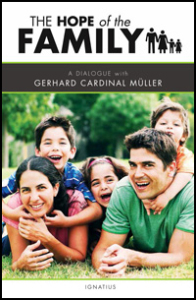 “Today, the family is in crisis—it is in crisis worldwide”, Pope Francis has said. “Young people don’t want to get married, they don’t get married, or they live together. Marriage is in crisis, and so the family is in crisis.”
“Today, the family is in crisis—it is in crisis worldwide”, Pope Francis has said. “Young people don’t want to get married, they don’t get married, or they live together. Marriage is in crisis, and so the family is in crisis.”
The main problem with the family in the Church today, contends Gerhard Cardinal Müller, is not the small number of civilly remarried divorced Catholics who want to receive Holy Communion. It is the large number of Catholics who live together before marriage, who marry civilly, or who do not even bother with marriage, as if these choices were sound options for Catholic living. Furthering the problem is the widespread failure of married Catholics to understand marriage as a way of Christian discipleship.
In this engaging conversation, Cardinal Müller, one of Pope Francis’ top advisers in the Vatican, addresses the challenges facing marriage and family life today. The loss of faith in many traditionally Christian societies has led to a crisis. In turn, cohabitation, civil marriage, and divorce and civil remarriage, further undermine faith because they harm the family as the “domestic Church” and the place of initial evangelization. Thus, the Church must undertake a robust new evangelization of the family: sharing the fullness of truth about marriage and family in Christ, encouraging families to worship and to pray together, and helping them to witness by their lives the joy of the gospel.
Cardinal Müller stresses mercy and compassion in pastoral ministry with struggling Catholics, but he does so without either contradicting the teaching of Jesus about divorce and remarriage or minimizing the power of grace to transform lives. In this way he proclaims hope for the family rooted in the gospel of Jesus Christ.
Remaining in the Truth of Christ: Marriage and Communion in the Catholic Church
edited by Robert Dodaro
Ignatius Press, 275 pages, paperback
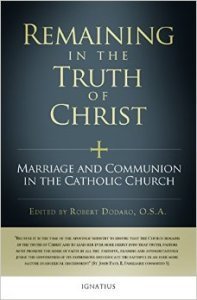 In this volume five Cardinals of the Church, and four other scholars, respond to the call issued by Cardinal Walter Kasper for the Church to harmonize “fidelity and mercy in its pastoral practice with civilly remarried, divorced people”.
In this volume five Cardinals of the Church, and four other scholars, respond to the call issued by Cardinal Walter Kasper for the Church to harmonize “fidelity and mercy in its pastoral practice with civilly remarried, divorced people”.
Beginning with a concise introduction, the first part of the book is dedicated to the primary biblical texts pertaining to divorce and remarriage, and the second part is an examination of the teaching and practice prevalent in the early Church. In neither of these cases, biblical or patristic, do these scholars find support for the kind of “toleration” of civil marriages following divorce advocated by Cardinal Kasper. This book also examines the Eastern Orthodox practice of oikonomia (understood as “mercy” implying “toleration”) in cases of remarriage after divorce and in the context of the vexed question of Eucharistic communion. It traces the centuries long history of Catholic resistance to this convention, revealing serious theological and canonical difficulties inherent in past and current Orthodox Church practice.
Thus, in the second part of the book, the authors argue in favor of retaining the theological and canonical rationale for the intrinsic connection between traditional Catholic doctrine and sacramental discipline concerning marriage and communion.
The various studies in this book lead to the conclusion that the Church’s longstanding fidelity to the truth of marriage constitutes the irrevocable foundation of its merciful and loving response to the individual who is civilly divorced and remarried. The book therefore challenges the premise that traditional Catholic doctrine and contemporary pastoral practice are in contradiction.
The Gospel of the Family: Going Beyond Cardinal Kasper’s Proposal in the Debate on Marriage, Civil Re-Marriage and Communion in the Church
by J. J. Pérez-Soba and S. Kampowski
Ignatius Press, 255 pages, paperback
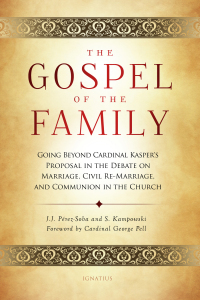 Walter Cardinal Kasper created an international media stir when he proposed allowing divorced and civilly remarried Catholics to receive the sacraments after a penitential period. But is this something the Church can even authorize?
Walter Cardinal Kasper created an international media stir when he proposed allowing divorced and civilly remarried Catholics to receive the sacraments after a penitential period. But is this something the Church can even authorize?
As the Church enters into the Extraordinary Synod of Bishops on Marriage and the Family, this book takes up the Kasper Proposal and sorts the helpful from the problematic. Never separating pastoral concerns from doctrinal considerations, the authors engage Cardinal Kasper’s ideas with respect, but also at times with some profound disagreement.
How can we heal the wounds of a broken culture? How do we best support families, given the challenges of modern life? What is truly merciful? If the family is central to both society and the Church, how do we best express the truth of its importance? As the authors delve into the matter, they discuss how the early Church addressed issues of marriage and separation, and review the history of Church practice and discipline on marriage. They also explore how contemporary moral attitudes have shaped modern perceptions of marriage and divorce, and how the Church can offer pastoral guidance in this area.
The good points of Cardinal Kasper’s proposal are discussed, but also the ways in which his proposal falls short in presenting the “Gospel of the Family” as the center of our understanding of married life. Stay informed with this essential guide to one of the most important debates in the Church today.
On Human Life (Humane Vitae)
by Pope Paul VI
Ignatius Press, 110 pages, paperback
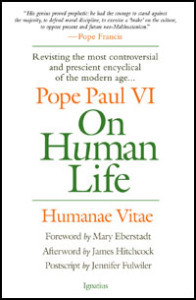 The papal encyclical Humanae Vitae“>On Human Life combines Humanae Vitae with commentary by popular and respected Catholic authors Mary Eberstadt, James Hitchcock, and Jennifer Fulwiler in order to address this question and to shed light on the document’s enduring wisdom.
The papal encyclical Humanae Vitae“>On Human Life combines Humanae Vitae with commentary by popular and respected Catholic authors Mary Eberstadt, James Hitchcock, and Jennifer Fulwiler in order to address this question and to shed light on the document’s enduring wisdom.
Humanae Vitae is Pope Paul VI’s explanation of why the Catholic Church rejects contraception. The pope referred to two aspects, or meanings, of human sexuality-the unitive and the procreative. He also warned of the consequences if contraception became widely practiced-consequences that have since come to pass: greater infidelity in marriage, confusion regarding the nature of human sexuality and its role in society, the objectification of women for sexual pleasure, compulsive government birth control policies, and the reduction of the human body to an instrument of human manipulation. The separation of sexuality from its dual purpose has also resulted in artificial reproduction technologies, including cloning, that threaten the dignity of the human person.
September 30, 2014
Persuasive Pro-Life: An Interview with Trent Horn
For years, Trent Horn repeatedly did something that would terrify most of us:
He discussed a controversial issue, with total strangers, in open squares on college campuses.
As part of the “Justice For All” pro-life movement, he travelled the country and had open-air debates about abortion. Here’s a short sample clip of him in action:
After sharing hundreds of conversations, Trent developed a keen sense for the most common objections to pro-life views, and he also learned the most effective replies. Trent recently compiled all of this expertise into a magnificent new book, Persuasive Pro-Life: How to Talk About our Culture’s Toughest Issue (Catholic Answers, 2014.) While many pro-life books lean on heavy philosophy or theory, Trent’s book is eminently practical. He shows you through real world dialogues how to respond to the most common pro-abortion arguments today.
Trent recently sat down with me to discuss the book, including why he wrote it, how engaging pro-abortion advocates is similar to engaging atheists, and how to respond to the strongest argument for abortion.
BRANDON: What compelled you to write Persuasive Pro-Life? What sets it apart from other pro-life books?
TRENT HORN: I wrote Persuasive Pro-Life because there were no books about defending the pro-life position that were written with Catholic laypeople in mind. Many books on abortion from a pro-life perspective simply decry how bad the situation is or they offer soundbite answers to pro-choice arguments. The ones that offer a comprehensive approach often have implicit or even explicit endorsements of Protestant theology so they aren’t helpful for my Catholic audiences. I also feel these books lack the nuance that is needed in real-world conversations.
In contrast, the books on defending the pro-life view written by Catholic authors, such as Frank Beckwith’s Defending Life, Pat Lee’s Abortion and Unborn Human Life, and Christopher Kaczor’s The Ethics of Abortion, were great philosophical works but they aren’t written for a lay audience so they can be overwhelming for the average reader.
What makes my book unique is that I have set out a “road map” for conversations about abortion and use field-tested techniques to simplify the issue and help pro-lifers answer both common and sophisticated objections. Readers will enjoy following along the many conversations I’ve had on this issue on both public university campuses and on the radio as part of my regular call-in show with Catholic Answers Live called Why are you pro-choice? where we let self-described pro-choice advocates engage me in dialogue on live radio.
BRANDON: You’ve established yourself as an expert on atheism after writing a definitive Catholic response titled Answering Atheism: How to Make the Case for God with Logic and Charity (Catholic Answers, 2013). Do you find similarities engaging atheists about God and pro-abortion supporters about life?
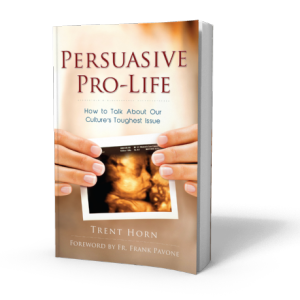 TRENT: Yes, in both cases I find that the other person simply assumes their position is true without actually defending it. For example, atheists will frequently say that if I can’t prove that theism is true then that means atheism is true. But historically atheism is not just a lack of belief in God but the denial of God’s existence, so the failure to prove God exists does not mean one has proven he does not exist. Even if atheism were just a “lack of belief” that would be uninteresting unless it were coupled with a positive claim like “There are no good reasons to think God exists.”
TRENT: Yes, in both cases I find that the other person simply assumes their position is true without actually defending it. For example, atheists will frequently say that if I can’t prove that theism is true then that means atheism is true. But historically atheism is not just a lack of belief in God but the denial of God’s existence, so the failure to prove God exists does not mean one has proven he does not exist. Even if atheism were just a “lack of belief” that would be uninteresting unless it were coupled with a positive claim like “There are no good reasons to think God exists.”
The same happens with pro-choice or pro-abortion advocates. They already assume abortion is a “harmless choice” or “woman’s right” and so they ask questions like, “Shouldn’t we keep abortion legal so that it’s safe?” or “How can you impose your view that life begins at conception onto other people?” They don’t realize that they assume their view is correct and discount the idea that abortion is never safe since at least half the people involved in the procedure die (i.e. the unborn children). Also, pro-choice advocates may chide pro-lifers for imposing the view that human organisms generally begin to exist at conception (a small minority begin at twinning), but they impose the view that humans don’t have rights until birth. Everyone “imposes” the view that life begins at some point, the question is whose position is backed by the evidence? My book argues that it is the pro-life view.
So yes, there are similarities in that one side thinks that if they refute the other then their view automatically wins by default, but there are differences. It’s important to remember that there are some atheists who are pro-life such as members of the group Secular Pro-life and Christians who are pro-choice like the Religious Coalition for Reproductive Choice.
BRANDON: What are some simple tips for discussing the abortion issue charitably and fruitfully?
TRENT: Try to ask more questions instead of making lots of statements. Specifically, questions like “What do you think about abortion?” and “Why do you think that?” Instead of hitting the other person over the head with your opinion you can have a calmer more powerful discussion by asking the right questions that get the person to -re-think the whole issue.
Also, just try to be normal and empathize with people. For example, when the issue of abortion in the case of rape comes up, don’t launch into a speech about how rare the situation is but just acknowledge how terrible such a situation is! My old mentor Steve Wagner used to say, “Before people will believe the unborn are human, they have to believe YOU are human!”
BRANDON: In the book you describe many types of pro-abortion opponents or inquirers. What should we know about each type?
TRENT: In my book I talk about ten different types of pro-choice advocates, not by demographics like age or race, but by the kind of arguments they use to defend their position. All of them can be boiled down to about three types of people:
1. Those who ignore the question of the unborn: These pro-choicers say abortion should be legal because it helps women or is a civil right. They completely sidestep the question of what abortion does to the unborn so you need to charitably get them back to that central issue.
2. Those who say the unborn don’t matter: These pro-choicers say the unborn are not human, not persons, or simply don’t have a right to live in their mother’s bodies. What’s good about these advocates is that they understand that the moral status of the unborn is the central issue in this debate. For them, you’ll need to use science to show that the unborn are living human organisms and philosophy to show them that there are no morally relevant differences between unborn human organisms and born human organisms.
3. Those with tough questions: This last group may implicitly accept that the unborn are fully human but they get bogged down with tough situations like abortion in the case of rape. You’ll need to compassionately explain that even in these tough situations violence against unborn humans is not morally justified.
BRANDON: What do you consider to be the strongest argument for abortion and how would you respond?
TRENT: The strongest argument for abortion grants as many premises to the pro-life advocate as possible. Bodily rights arguments, which grant that unborn children could be human beings with a right-to-life, but deny the unborn have a right to use their mother’s body to live, are the strongest argument for abortion.
However, these arguments either rest on controversial premises that are certainly false (“I can do whatever I want with my body”) or they use analogies that are fatally dis-analogus to pregnancy (being forced to donate an organ to save someone’s life).
I have a whole chapter in my book dedicated to pointing out the flaws in these kinds of arguments for abortion.
BRANDON: If you had thirty seconds with a pro-abortion advocate, what would you say to change their mind?
TRENT: I would ask them to explain to me what’s wrong with the view that all human organisms should have the basic right to live and since the unborn are living human organisms, then why shouldn’t we give them that same basic right to live? Why should we believe that smaller, less developed, and more dependent humans don’t deserve to live?
Hopefully, by showing them that there is no morally relevant difference between born and unborn humans, the person will begin to question the morality of abortion.
Find out more about Trent Horn by visiting his website, TrentHorn.com . And be sure to pick up your copy of his new book, Persuasive Pro-Life: How to Talk about Our Culture’s Toughest Issue :
If you liked this discussion you’ll find several more on my Interviews page. Subscribe free via feed reader or email and ensure sure you don’t miss future interviews.
The post Persuasive Pro-Life: An Interview with Trent Horn appeared first on Brandon Vogt.





Brandon Vogt's Blog
- Brandon Vogt's profile
- 75 followers



